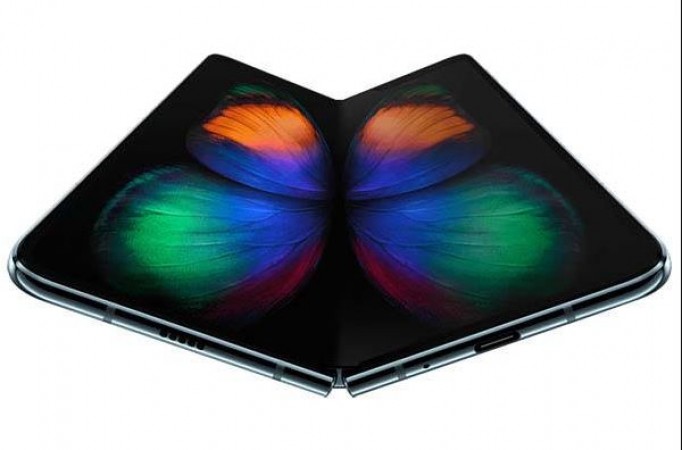
In today's fast-paced world, technological advancements are constantly pushing the boundaries of innovation. One such groundbreaking development in the realm of smartphones and tablets is the advent of foldable devices. These cutting-edge gadgets have taken portability and versatility to a whole new level, redefining the way we interact with our digital world. In this article, we will delve into the exciting world of foldable devices, exploring their history, the technology behind them, their benefits, and their potential impact on the future of mobile computing.
Foldable devices have emerged as a game-changer in the technology landscape, bridging the gap between smartphones and tablets. These innovative gadgets offer the compactness of a smartphone with the expansive display of a tablet, providing users with a seamless and immersive experience.
Evolution of Foldable Devices
From Concept to Reality: A Brief History
The concept of foldable devices has been around for decades, with science fiction often depicting futuristic gadgets with flexible screens. However, it wasn't until recent years that advancements in materials and technology made these devices a reality.
Technological Breakthroughs and Challenges
Developing a functional foldable device required overcoming numerous challenges. Engineers had to create flexible displays that could endure thousands of folds without compromising image quality. Additionally, finding durable yet lightweight materials for the device's body was essential for its success.
How Foldable Devices Work
The Role of Flexible Displays
Foldable devices rely on cutting-edge flexible display technology. These displays use organic light-emitting diodes (OLED) or similar materials that can bend and flex without damage.
Importance of Durable Materials
To ensure the longevity of foldable devices, manufacturers use advanced materials like carbon fiber and titanium. These materials not only make the devices sturdy but also lightweight.
Advantages of Foldable Devices
Enhanced Portability and Convenience
Foldable devices can be easily folded and unfolded, making them highly portable. Users can carry a tablet-sized display in their pocket, offering unmatched convenience.
Multitasking Made Effortless
The large foldable screens enable users to multitask effectively. They can run multiple applications simultaneously side by side, enhancing productivity.
Improved Productivity
Foldable devices are transforming how people work. Professionals can now perform tasks that were previously limited to desktop computers or laptops on their foldable gadgets.
Popular Foldable Devices in the Market
Samsung Galaxy Fold
The Samsung Galaxy Fold is one of the pioneers of foldable devices, featuring a 7.3-inch Infinity Flex display when unfolded, and a 4.6-inch cover display when folded.
Huawei Mate X
The Huawei Mate X boasts an 8-inch foldable display, offering a truly immersive viewing experience. It also features 5G capabilities for lightning-fast connectivity.
Motorola Razr
The Motorola Razr pays homage to the iconic flip phones of the past. It unfolds to reveal a 6.2-inch Flex View display and is designed to fit comfortably in the palm of your hand.
The Future of Foldable Devices
Potential Applications
Foldable devices have immense potential beyond smartphones and tablets. They could be integrated into wearable technology, smart home devices, and even flexible televisions.
Impact on Mobile Industry and Beyond
The rise of foldable devices is set to disrupt the mobile industry. Manufacturers, developers, and consumers are all eager to explore the possibilities these devices offer.
Addressing Perplexity: Common Misconceptions about Foldable Devices
Durability and Longevity Concerns
One of the main concerns surrounding foldable devices is their durability. Manufacturers are continually improving the materials and engineering to address these issues.
Pricing and Affordability
Foldable devices are currently at a premium price point. However, as technology advances and demand increases, prices are expected to become more affordable.
App and Software Optimization
Developers are working diligently to optimize applications for foldable devices, ensuring a seamless user experience.
Embracing the Burstiness: Exciting Trends in Foldable Device Development
Foldable Screens in Different Form Factors
Future foldable devices may come in various forms, including rollable and tri-fold designs, offering users even more options.
Integration of 5G Technology
As 5G technology becomes more prevalent, foldable devices are likely to fully embrace its capabilities, enabling lightning-fast data transfer and connectivity.
Augmented Reality (AR) Capabilities
Foldable devices could revolutionize AR experiences, allowing for more immersive and interactive applications.
Foldable devices have ushered in a new era of possibilities in smartphone and tablet design. With their sleek, foldable displays and innovative functionalities, these devices are transforming how we interact with technology. As they continue to evolve and become more accessible, we can expect even more exciting advancements in the mobile industry and beyond.
Advanced Camera Gadgets: DSLRs vs. Mirrorless Cameras vs. Smartphones
The Age of Green: How Green Buildings are Transforming Our World
Evolution of Gaming Gadgets and Consoles Evolution of Gaming Gadgets and Consoles